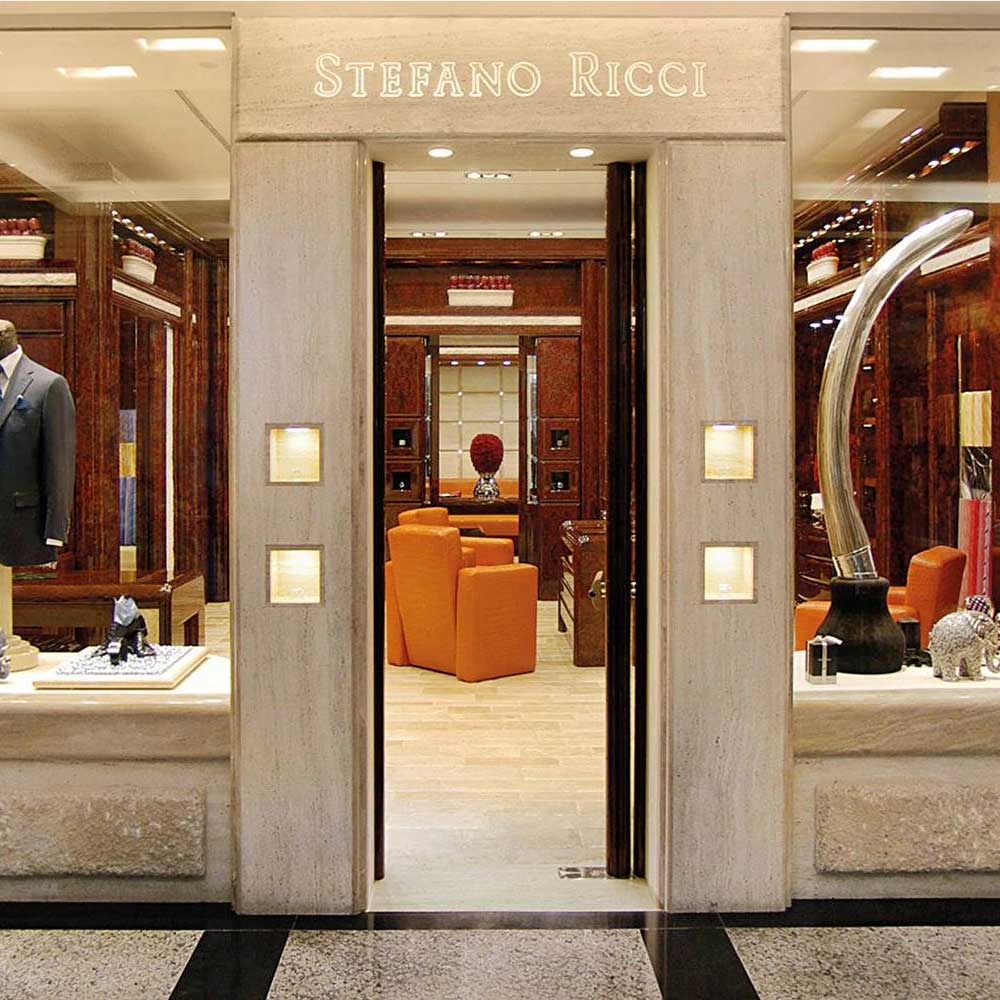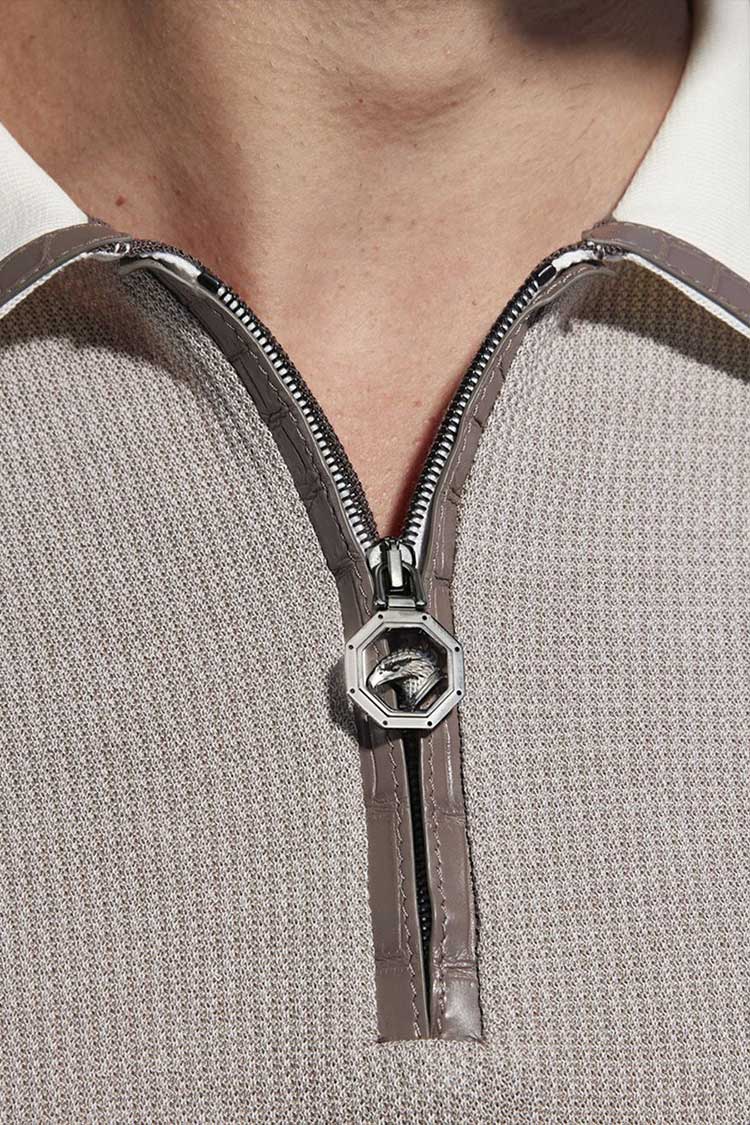
In the rarefied world of high-end menswear, few names evoke as much curiosity and debate as Stefano Ricci.
Founded in 1972 by the eponymous Florentine designer, this Italian label has steadily climbed the ranks of fashion’s elite.
Yet, a persistent question lingers in the minds of style connoisseurs and potential customers alike: Is Stefano Ricci truly a luxury brand?
This article aims to dissect this query, offering a comprehensive analysis of the brand’s credentials, reputation, and place in the luxury fashion ecosystem.
Examining Stefano Ricci’s Luxury Credentials
Before delving into the specifics of Stefano Ricci, it’s crucial to establish what constitutes a luxury brand in the fashion industry.
Luxury, in its essence, goes beyond mere high prices or exclusivity. It encompasses a combination of exceptional quality, craftsmanship, heritage, and a certain je ne sais quoi that elevates a brand above its contemporaries.
Luxury brands typically boast a rich history, innovative design, superior materials, and a clientele that includes the world’s elite.
They often maintain strict control over their distribution channels to preserve exclusivity. With these criteria in mind, let’s examine Stefano Ricci’s standing in the luxury landscape.
Brand Heritage
Stefano Ricci’s journey began in Florence, Italy, a city renowned for its artisanal traditions and fashion heritage.
The brand’s inception in 1972 was marked by a focus on high-quality neckties, a seemingly humble starting point for what would become a global luxury empire.
Ricci’s innovative patterns and commitment to quality quickly caught the attention of prestigious retailers like Neiman Marcus and Harrods.
This early success laid the foundation for the brand’s expansion into a full menswear line, including shirts, suits, and accessories. By the 1990s, Stefano Ricci had begun to establish itself as a serious contender in the luxury market, opening its first mono-brand store in Shanghai in 1993.
This bold move, at a time when China was just beginning to emerge as a luxury market, demonstrated the brand’s foresight and ambition.
Over the following decades, Stefano Ricci continued to expand its product range and global presence, evolving from a specialist tie maker into a comprehensive luxury lifestyle brand.
The company’s acquisition of the historic Antico Setificio Fiorentino silk mill in 2010 further cemented its commitment to preserving traditional craftsmanship.
Today, with over 65 boutiques internationally, including flagship stores in the world’s capital cities along with 19 shop-in-shops, Stefano Ricci has established a significant presence in the luxury fashion sector.
Quality of Materials and Craftsmanship
One of the hallmarks of a true luxury brand is its unwavering commitment to quality, and in this respect, Stefano Ricci certainly holds its own.
The brand is renowned for its use of exceptional materials, including some of the finest fabrics and leathers available in the world.

For instance, Stefano Ricci’s shirts are crafted from ultra-fine cotton, with yarns woven at the lowest possible speed to maintain fibre integrity.
The company’s attention to detail extends to its treatment of fabrics, with Ricci famously allowing cloths to ‘decant’ like fine wine before finishing.
Stefano Ricci’s process, which can take several days, allows the natural fibres to settle and recover from the stress of production, resulting in a fabric that Ricci believes better retains its inherent qualities and drapes more elegantly on the body.
In terms of craftsmanship, Stefano Ricci maintains a strong commitment to traditional artisanal techniques.
The brand employs master craftsmen, many of whom have decades of experience, to create their products.
This approach ensures a level of quality and attention to detail that is increasingly rare in today’s fashion landscape.

The acquisition of the Antico Setificio Fiorentino, a silk mill operating since 1786, further demonstrates Ricci’s dedication to preserving and utilising traditional craft techniques.
However, it’s worth noting that while this commitment to quality is admirable, it’s also a standard expectation for any brand positioning itself in the luxury market.
Exclusivity and Pricing
Exclusivity is another key factor in determining a brand’s luxury status, and Stefano Ricci certainly doesn’t fall short in this aspect.
The brand produces its collections in extremely limited quantities, with some fabric runs limited to just 60 metres – enough for only 20 suits worldwide.
Stefano Ricci’s level of rarity ensures that its customers are unlikely to encounter others wearing identical garments.
In terms of pricing, Stefano Ricci positions itself firmly at the upper echelons of the market.
Suits can easily exceed $10,000, placing them in the same price bracket as established luxury houses like Brioni or Kiton.
The brand’s refusal to discount its products, even going so far as to destroy unsold merchandise rather than offer it at reduced prices, further reinforces its luxury positioning.
However, it’s important to note that high prices alone do not guarantee luxury status; they must be justified by corresponding quality and brand prestige.
Brand Perception and Clientele
The perception of a brand by its clientele and the wider public is crucial in establishing its luxury credentials.
Stefano Ricci has cultivated a reputation for catering to an ultra-wealthy clientele, including royalty, heads of state, and business tycoons.
The brand’s founder has been quoted as saying, “We sell to people that have got everything,” highlighting the exclusive nature of their target market.
Stefano Ricci’s focus on the ultra-high-net-worth individual has helped Stefano Ricci carve out a niche in the luxury market.
However, the brand’s relative youth compared to established luxury houses like Hermès or Louis Vuitton means it lacks the historical cachet that often accompanies luxury status.
Additionally, Stefano Ricci’s low-key marketing approach, while appealing to its discreet clientele, has resulted in lower brand recognition among the general public compared to more widely known luxury brands.
Stefano Ricci’s Luxury Lifestyle
A hallmark of many luxury brands is their ability to extend beyond their original product category, creating a comprehensive lifestyle offering.
Stefano Ricci has successfully followed this path, expanding from its origins in ties and shirts to encompass a full range of menswear and beyond.
The brand now offers everything from suits and sportswear to fragrances and home furnishings.

In 2009, Stefano Ricci launched SR HOME, a collection that includes porcelain, crystal, and silverware, as well as home furnishings and leather accessories.
SR HOME’s range encompasses everything from fine bone china dinner services and hand-blown crystal glassware to leather-bound desk accessories and even custom furniture pieces.
The expansion into lifestyle products mirrors the strategies of established luxury conglomerates like LVMH or Kering.
The brand has also ventured into more niche luxury sectors, such as bespoke interiors for yachts and private jets, further cementing its position in the ultra-luxury market.
However, it’s worth noting that while this diversification is impressive, it’s also a common strategy among aspirational luxury brands seeking to increase their market share and customer base.
Comparing Stefano Ricci to Established Luxury Brands
When assessing Stefano Ricci’s luxury status, it’s instructive to compare it with established luxury powerhouses.
In terms of quality and craftsmanship, Stefano Ricci certainly holds its own against brands like Brioni, Kiton, or Loro Piana.
The attention to detail and use of premium materials in Ricci’s products are on par with these renowned luxury houses.
However, where Stefano Ricci often diverges from traditional luxury brands is in its aesthetic and branding approach.
While many luxury brands have shifted towards a more understated, minimalist aesthetic in recent years, Stefano Ricci has maintained a bold, opulent style that some critics argue borders on ostentatious.
Stefano Ricci’s aesthetic choice aligns with the tastes of its core clientele but may limit its appeal to a broader luxury consumer base.
In terms of brand heritage, Stefano Ricci, founded in 1972, is relatively young compared to centuries-old houses like Hermès (1837) or Louis Vuitton (1854).
This lack of historical pedigree can be a disadvantage in the luxury market, where heritage often plays a significant role in brand perception.
However, it’s worth noting that other relatively young brands like Tom Ford (founded 2005) have successfully established themselves as luxury players, indicating that age is not the sole determinant of luxury status.
Tom Ford’s rapid ascension to luxury status demonstrates that with the right combination of design prowess, quality, and marketing, a brand can quickly establish itself in the luxury segment.
Assessing Stefano Ricci’s Luxury Status – The Verdict
After careful consideration of all factors, it’s fair to conclude that Stefano Ricci does indeed qualify as a luxury brand, albeit one with a unique position in the market.
The brand’s unwavering commitment to quality, use of premium materials, and expert craftsmanship align with the expectations of a luxury label.
Its limited production runs and high price points further reinforce its luxury credentials.
The expansion into lifestyle products and bespoke services also mirrors the strategies of established luxury conglomerates.
However, it’s important to note that Stefano Ricci occupies a specific niche within the luxury market. Its focus on ultra-high-net-worth individuals and its bold, opulent aesthetic set it apart from more mainstream luxury brands.
Stefano Ricci’s positioning has both advantages and drawbacks; while it allows Stefano Ricci to command premium prices and maintain exclusivity, it may limit its broader appeal and recognition.
The brand’s relative youth and lower public profile compared to historic luxury houses also influence its standing in the luxury hierarchy.
While these factors don’t negate Stefano Ricci’s luxury status, they do impact its position within the luxury market ecosystem.
What Stefano Ricci Represents in Today’s Fashion Landscape
Stefano Ricci represents a fascinating case study in the evolution of luxury brands in the 21st century.
It demonstrates that it’s possible for a relatively young brand to establish itself in the luxury market through a combination of quality and exclusivity.
The brand’s success also highlights the continued demand for traditional craftsmanship and ‘old world’ luxury in an era increasingly dominated by streetwear-influenced fashion.
For men seeking to project an image of classic success and achievement, Stefano Ricci offers a compelling proposition.
Its products are undeniably luxurious and exclusive, appealing to those who value traditional notions of masculine elegance and success.
However, potential customers should be aware that choosing Stefano Ricci means aligning oneself with a specific aesthetic and brand image that may not have the same broad recognition or versatility as some other luxury labels.
Ultimately, while Stefano Ricci may not have the centuries-old heritage or widespread recognition of some luxury titans, it has undoubtedly carved out a place for itself in the upper echelons of the luxury market.
Its story serves as a reminder that in the world of luxury fashion, quality, exclusivity, and a clear brand identity can sometimes trump historical pedigree.


